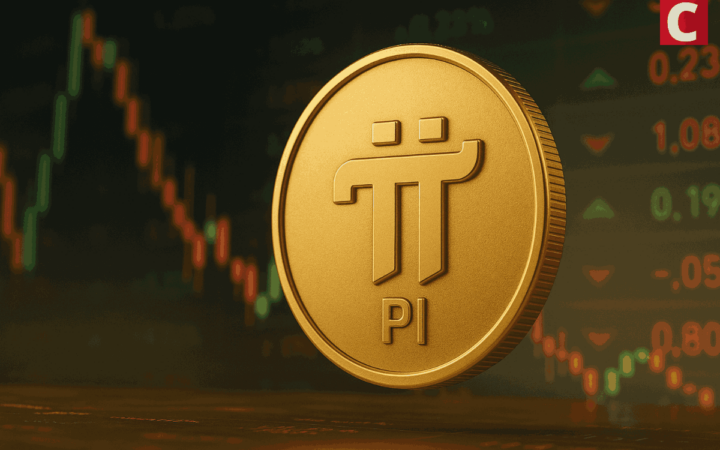The US and Thailand signed a trade framework cutting tariffs on 99% of US exports
The United States and Thailand just set a new baseline for trade. During a packed day of high-stakes diplomacy in Kuala Lumpur, both countries signed a framework to remove nearly all trade barriers between them.
Thailand agreed to slash tariffs on about 99% of U.S. goods, everything from farm exports to industrial products. The U.S. is committed to clearing non-tariff barriers and setting up a new system to handle future disputes.
The announcement came during the regional summit where President Donald J. Trump participated in the 13th annual U.S.-ASEAN meeting. He didn’t stop at Thailand. He also signed reciprocal trade agreements with Cambodia and Malaysia, issued joint statements with Vietnam, and hammered out multiple defense deals.
Trump met with four heads of government in a single day, called it “a historic alignment of peace and commerce,” and said, “We’re clearing the table, making it fair, finally.”
Thailand signs peace with Cambodia, frees detained soldiers
Thailand didn’t just ink trade deals. It signed peace. Prime Minister Anutin Charnvirakul joined Cambodia’s leader at a ceremony hosted by Trump and Malaysia’s Prime Minister Anwar Ibrahim.
There, they signed the ‘Kuala Lumpur Peace Accords,’ an agreement that ended months of rising border tension. Thailand agreed to free 18 Cambodian soldiers who had been detained since July.
Both sides committed to building border observer teams. These will monitor activity and de-escalate flashpoints in real time. “This is about peace with real consequences,” Trump said. “People’s lives are on the line. And now they’ll be safe.”
This peace breakthrough wasn’t isolated. In the same room, Malaysia finalized a major deal with the U.S. that will cut tariffs and lift restrictions on American agriculture, cars, and machinery.
Malaysia will also end unfair policies that blocked U.S. vehicles from competing in its market. In return, the U.S. will recognize Malaysian regulatory oversight, no more double testing or duplicate forms.
Cambodia made a similar offer, agreeing to eliminate all tariffs on U.S. exports, including food and industrial goods.
With Cambodia, Washington also agreed to restart the ANGKOR SENTINEL defense exercise, last held in 2017. And for the first time since Prime Minister Hun Manet took power, he met face-to-face with a U.S. president.
The U.S. also agreed to lift its arms embargo and open more training seats at West Point and the Air Force Academy for Cambodian officers.
US, Thailand ramp up defense and crime-fighting partnership
Thailand and the United States also expanded defense cooperation. Both countries signed a Memorandum of Understanding focused on strengthening supply chains for critical minerals used in chips, EVs, and more.
The MOU also promotes deals between U.S. and Thai firms. The goal? Push back against subsidized dumping, fake pricing, and low standards that’ve polluted global markets. Thailand also pledged to step up cybercrime cooperation.
U.S. and Thai law enforcement agencies will now work together to crack down on scam centers and financial fraud rings, some of which have stolen over $10 billion from Americans. “These aren’t kids in basements. These are organized networks. We’re going after them,” a U.S. official said.
Elsewhere, Trump closed a $3.4 billion annual LNG deal with Malaysia’s Petronas, $42.6 million in coal sales, and $119 million in telecom exports.
Malaysia committed to buying 30 Boeing planes with an option for 30 more, and agreed to purchase $150 billion worth of U.S. semiconductors, aerospace parts, and data center gear.
Both countries signed another MOU on maritime security and even co-signed the Artemis Accords—bringing the number of space-exploring nations onboard to 59.
Get seen where it counts. Advertise in Cryptopolitan Research and reach crypto’s sharpest investors and builders.
You May Also Like

Why Is Pi Network Token (PI) Up 22% on Oct. 29?

German VDMA cautions U.S. tariff expansion will impact over 50% of machine exports

BNB Price Drops 2% as the Dex Volume Tumbles Cautioning Further Downside
Highlights: The BNB price is down 2% to $1111.46, despite the trading volume spiking 26%. The BNB on-chain demand has slipped, with the open interest plummeting 3% showing a drop in demand. The technical outlook shows a tight tug-of-war, with the bulls attempting to overcome resistance zones. The BNB price is down 2% today, to trade at $1111.46. Despite the plunge, the daily trading volume has soared 26% showing increased market activity among traders. However, BNB Chain has seen declining network activity, with the open interest plummeting, signaling a drop in demand. On Chain Demand on BNB Cools Off The BNB Chain is in a state of cooldown of network activity, which indicates low on-chain demand. In most instances, when a network fails to ensure large volumes or revenues, it means that there is low demand or outflows to other networks. BNB DeFi Data: DeFiLlama According to DeFiLlama data, the volume of the Decentralized Exchanges (DEXs) is down to at least $2.12 billion in comparison to the high of $6.313 billion on October 8, which also means low on-chain liquidity. On the other hand, Coinglass data shows that the volume of BNB has grown by 3.97% to reach $4.95 billion. However, the open interest in BNB futures has dropped by 3.36% to reach $1.74 billion. This reduction in open interest is an indication of a conservative stance by investors since the number of new positions being opened is low. This could be an indication that investors are not so sure about the short-term price outlook. BNB Derivatives Data: CoinGlass Meanwhile, the long-to-short ratio is sitting at 0.9091. This shows that the traders are undecided on BNB price’s next move, as it sits below 1. BNB Price Moves Into Consolidation The chart displays the BNB/USD price action on a 4-hour timeframe, with the token currently hovering around $1111.46. The 50-day Simple Moving Average (SMA) is at $1113, while the 200-day SMA sits at $1129, cushioning the bulls against upside movement. The price has mostly been trending below both SMAs, indicating that the bears are having the upper hand. The BNB trading volume is up, soaring 26%, signaling the momentum is real. On the 4-hour chart, BNB is trading within a consolidation channel. In such a case, this pattern may act as an accumulation period, giving the bulls hind wings to break above resistance zones. BNB/USD 4-hour chart: TradingView Zooming in, the Relative Strength Index (RSI) sits at 44.15, below the 50 level. This shows weakening momentum in the BNB market, and might lead to the RSI plunging to the oversold region if the bulls don’t regain control. In the short term, the BNB price could move up to $1113 resistance and flip it into support. A close above this zone will see the bulls target $1126 resistance, giving the bulls strength to reclaim the $1230 mark. Conversely, if the resistance zones prove too strong, a dip towards $1012 could be plausible. In such a case, this could be a prime buy zone for the risk-takers. In the long term, if the token keeps the hype alive, the bulls may reclaim the $1375 high or higher. eToro Platform Best Crypto Exchange Over 90 top cryptos to trade Regulated by top-tier entities User-friendly trading app 30+ million users 9.9 Visit eToro eToro is a multi-asset investment platform. The value of your investments may go up or down. Your capital is at risk. Don’t invest unless you’re prepared to lose all the money you invest. This is a high-risk investment, and you should not expect to be protected if something goes wrong.